Abstract
Objective:
To compare the cooling and rewarming effects of two clinical 20-minute cryotherapy treatments on the temperature of the human leg.
Design and Setting:
Sixteen subjects were randomly treated with either 20 minutes of a 1.8-kg crushed-ice pack, placed directly over the left calf, or a 20-minute immersion in a cold (10°C) whirlpool. Data were collected at a university human performance research laboratory.
Subjects:
Seventeen male and 15 female healthy college students.
Measurements:
Subcutaneous and muscle tissue temperatures were measured by 26-gauge hypodermic needle microprobe inserted in the calf, just below the skin, or 1 cm below the subcutaneous fat, respectively.
Results:
There was no significant difference in the decrease in intramuscular temperatures between treatments (t (30) = -1.76, P = .09). The ice pack treatment significantly decreased the subcutaneous temperature more than the whirlpool (t (30) = -2.64, P = .01). The subcutaneous temperature rewarmed significantly more in the ice pack group (12.3 ± 3.3°C) than the cold whirlpool (7.4 ± 2.1°C) (t (30) = 4.98, P = .0000). The ice pack group's intramuscular temperature increased over each 5-minute interval of the 30-minute post-treatment period for an overall increase of 2.0 ± 3.1°C. During the 30-minute post- treatment the cold whirlpool group continued to cool, for an overall decrease of 1.8 ± 1.4°C. This difference between groups at the end of the 30-minute post-treatment was significant (t(30) = 4.44, P = .0001).
Conclusions:
As administered in our protocol, cold whirlpool is superior to crushed-ice packs in maintaining prolonged significant temperature reduction after treatment.
Keywords: ice packs, whirlpool, rehabilitation
Full text
PDF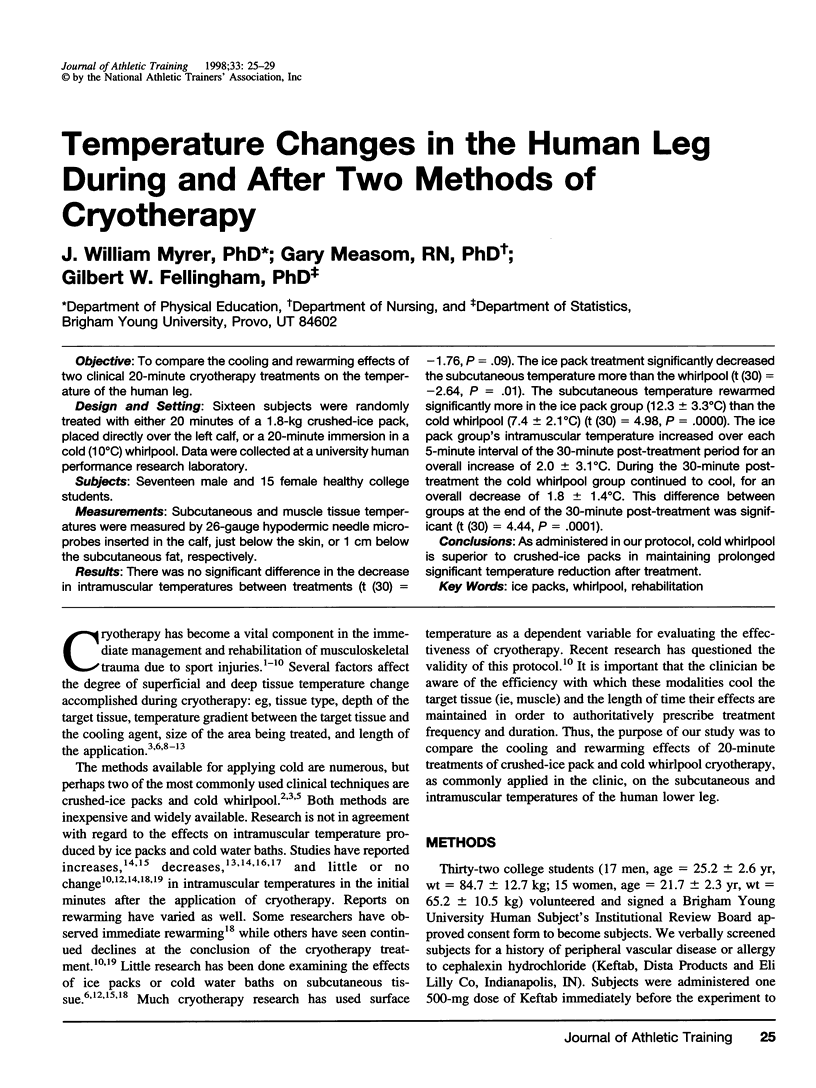
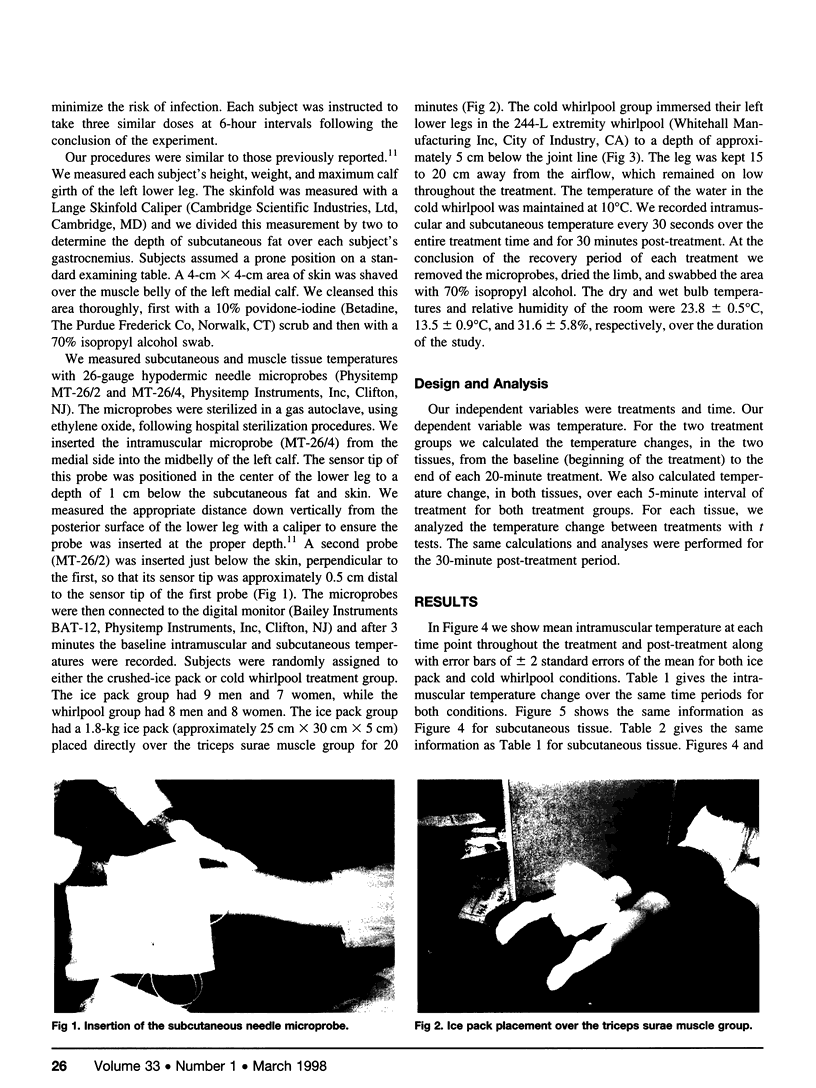
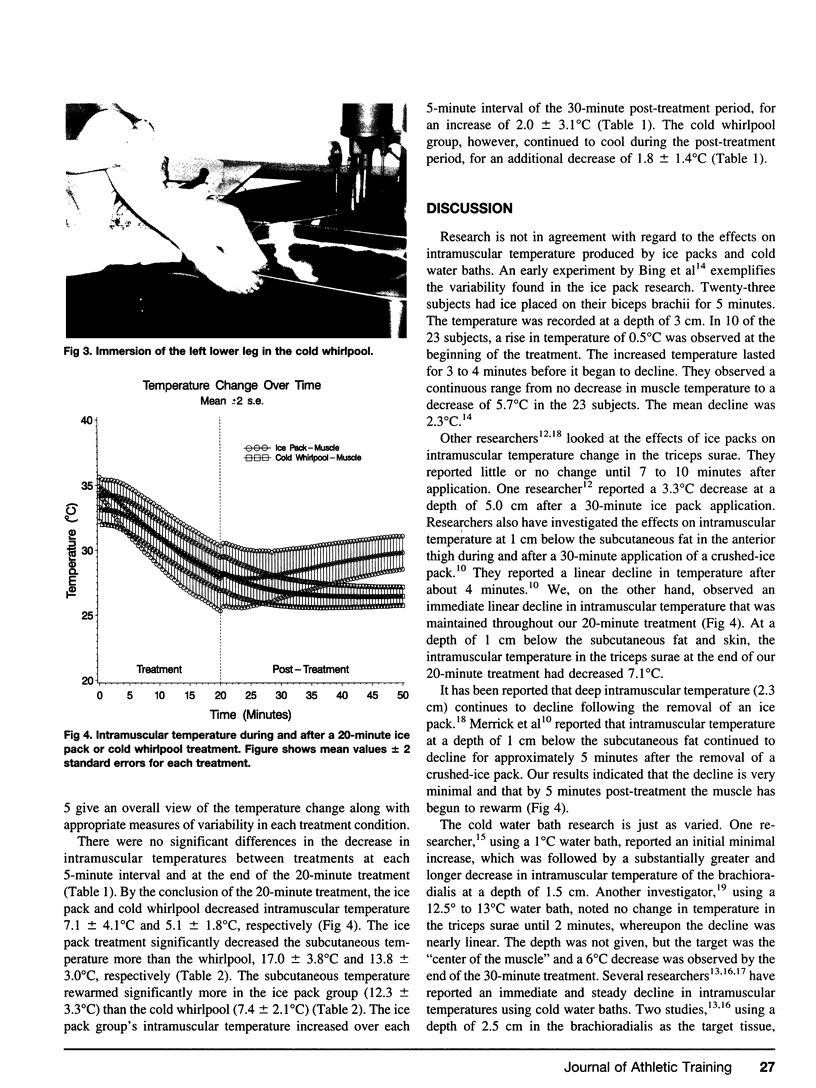
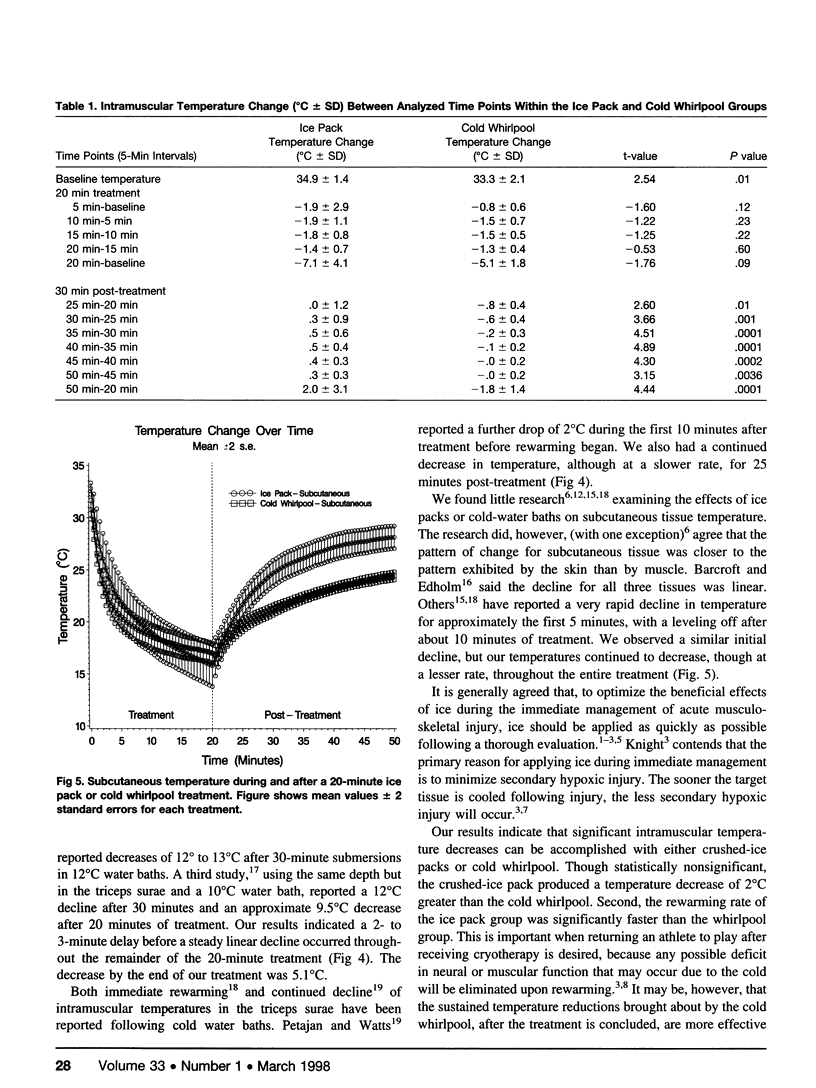
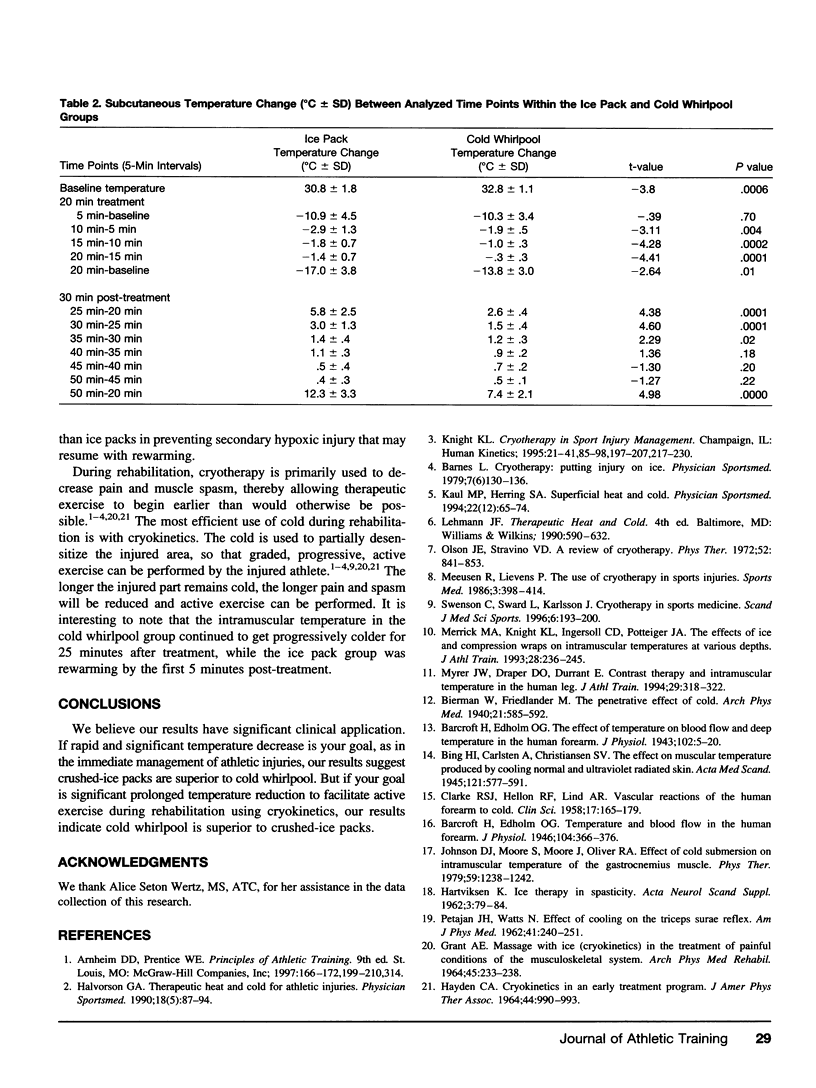
Images in this article
Selected References
These references are in PubMed. This may not be the complete list of references from this article.
- Barcroft H., Edholm O. G. The effect of temperature on blood flow and deep temperature in the human forearm. J Physiol. 1943 Jun 30;102(1):5–20. doi: 10.1113/jphysiol.1943.sp004009. [DOI] [PMC free article] [PubMed] [Google Scholar]
- CLARKE R. S., HELLON R. F., LIND A. R. Vascular reactions of the human forearm to cold. Clin Sci. 1958 Feb;17(1):165–179. [PubMed] [Google Scholar]
- GRANT A. E. MASSAGE WITH ICE (CRYOKINETICS) IN THE TREATMENT OF PAINFUL CONDITIONS OF THE MUSCULOSKELETAL SYSTEM. Arch Phys Med Rehabil. 1964 May;45:233–238. [PubMed] [Google Scholar]
- HAYDEN C. A. CRYOKINETICS IN AN EARLY TREATMENT PROGRAM. Phys Ther. 1964 Nov;44:990–993. doi: 10.1093/ptj/44.11.990. [DOI] [PubMed] [Google Scholar]
- Johnson D. J., Moore S., Moore J., Oliver R. A. Effect of cold submersion on intramuscular temperature of the gastrocnemius muscle. Phys Ther. 1979 Oct;59(10):1238–1242. doi: 10.1093/ptj/59.10.1238. [DOI] [PubMed] [Google Scholar]
- Meeusen R., Lievens P. The use of cryotherapy in sports injuries. Sports Med. 1986 Nov-Dec;3(6):398–414. doi: 10.2165/00007256-198603060-00002. [DOI] [PubMed] [Google Scholar]
- Merrick M. A., Knight K. L., Ingersoll C. D., Potteiger J. A. The effects of ice and compression wraps on intramuscular temperatures at various depths. J Athl Train. 1993 Fall;28(3):236–245. [PMC free article] [PubMed] [Google Scholar]
- Myrer J. W., Draper D. O., Durrant E. Contrast therapy and intramuscular temperature in the human leg. J Athl Train. 1994 Dec;29(4):318–322. [PMC free article] [PubMed] [Google Scholar]
- Olson J. E., Stravino V. D. A review of cryotherapy. Phys Ther. 1972 Aug;52(8):840–853. doi: 10.1093/ptj/52.8.840. [DOI] [PubMed] [Google Scholar]
- PETAJAN J. H., WATTS N. Effects of cooling on the triceps surae reflex. Am J Phys Med. 1962 Dec;41:240–251. [PubMed] [Google Scholar]
- Swenson C., Swärd L., Karlsson J. Cryotherapy in sports medicine. Scand J Med Sci Sports. 1996 Aug;6(4):193–200. doi: 10.1111/j.1600-0838.1996.tb00090.x. [DOI] [PubMed] [Google Scholar]





